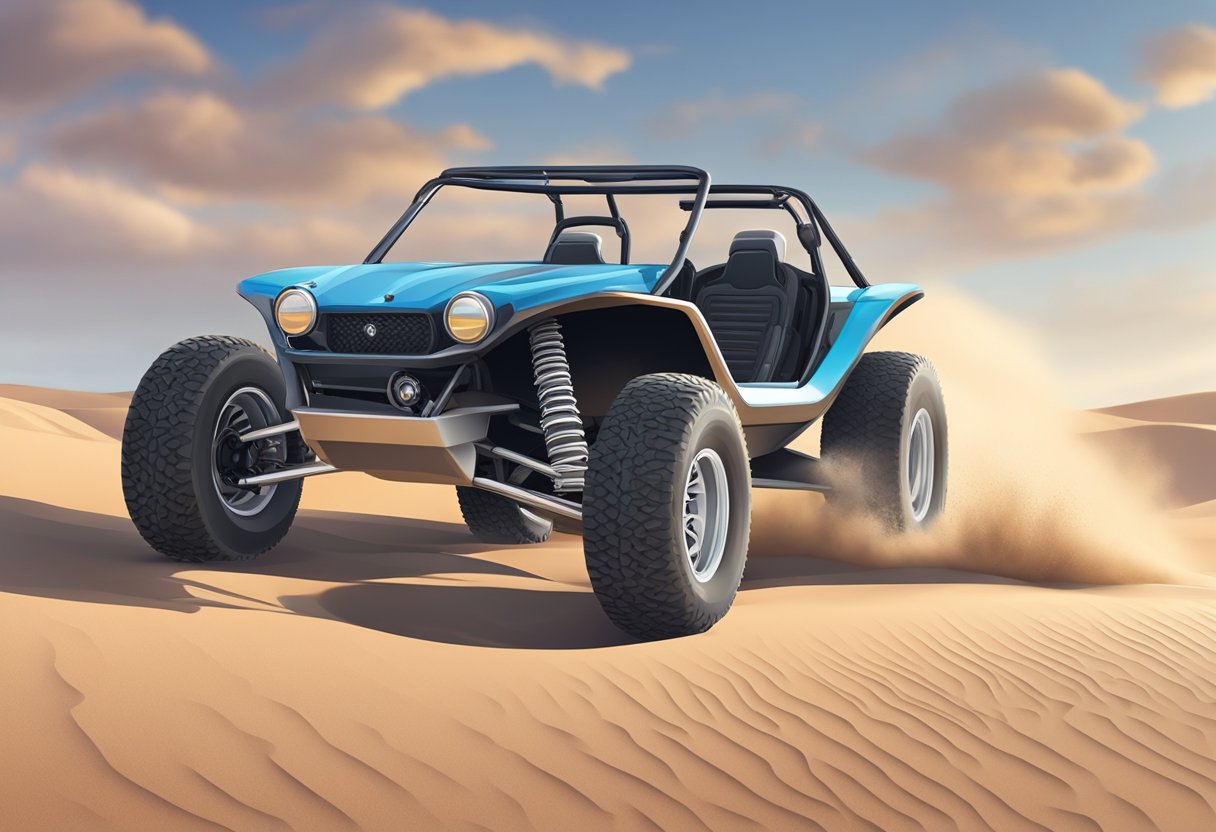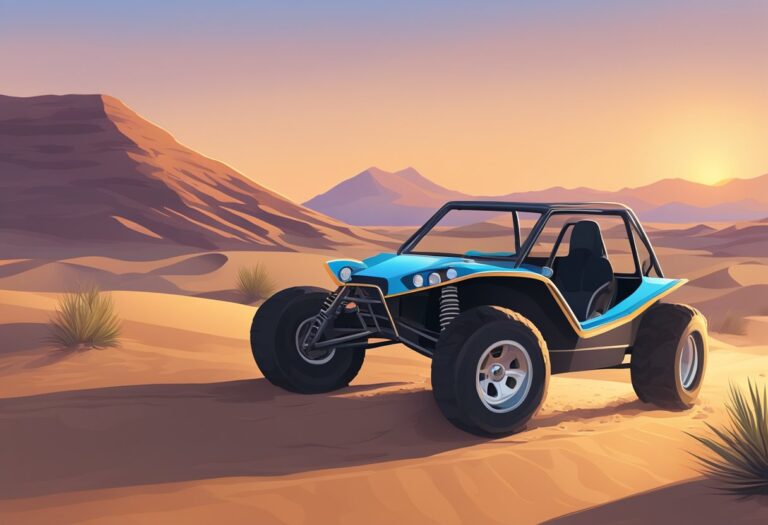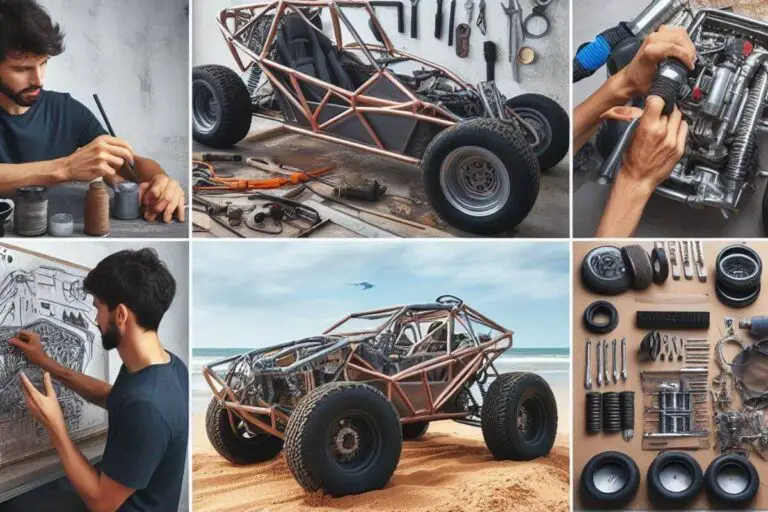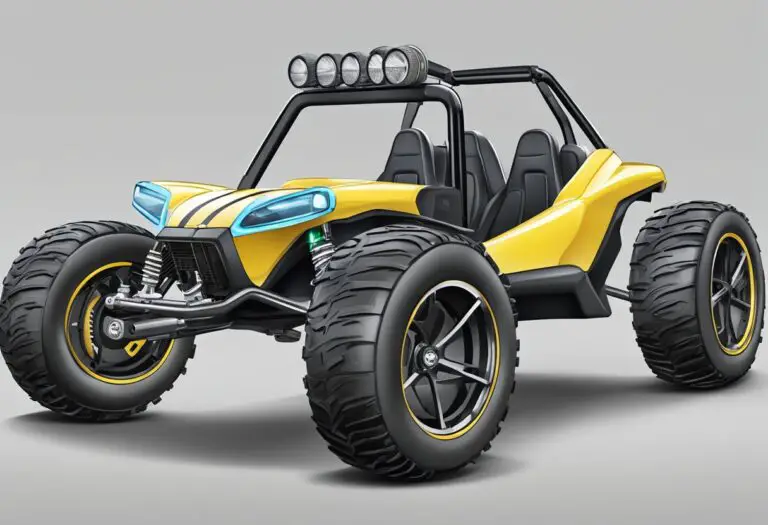What Does a Dune Buggy Look Like: A Comprehensive Guide

Dune buggies are captivating vehicles, specifically designed for the thrill of off-roading on sand dunes. Their distinctive look and rugged build make them stand out. Let’s delve into the various aspects that define what a dune buggy looks like.
Basic Structure and Design
Chassis and Frame
At the heart of a dune buggy is its lightweight yet robust chassis. Typically made from steel, the frame is designed to withstand the harsh conditions of off-road driving. The structure is often exposed, which not only adds to the rugged aesthetic but also simplifies maintenance and modifications. The frame is crucial for ensuring the buggy’s durability and safety.
Body Style
Dune buggies usually feature a minimalist body style, with many taking inspiration from the iconic Meyers Manx. These vehicles often have fiberglass bodies that are lightweight and resistant to corrosion. The Meyers Manx, created by Bruce Meyers in the 1960s, is characterized by its swooping lines and rounded headlights, embodying the carefree beach culture of the era. Modern dune buggies come in various designs, from basic models with minimal body panels to more elaborate versions with full enclosures and custom paint jobs.
Key Features of a Dune Buggy
Tires and Suspension
The tires and suspension system are critical components of a dune buggy. Wide, paddle tires are common, providing maximum traction on loose sand. These tires help the buggy glide over dunes with ease. The suspension system, often featuring long-travel shocks and springs, is designed to absorb the impact of rough terrain and jumps, ensuring a smoother ride.
Engine and Performance
Engines in dune buggies vary widely, from small 1000cc engines to high-performance V-8s. Many enthusiasts opt for turbocharged engines to enhance power and performance. The engine’s placement is usually at the rear, contributing to the vehicle’s low center of gravity and improved stability on uneven surfaces.
Safety Components
Safety is paramount when driving a dune buggy. Essential safety features include roll cages, seat belts, and fire extinguishers. Drivers are also advised to wear helmets, driving suits, and gloves for additional protection. A robust roll cage is particularly important as it helps protect occupants in case of a rollover.
Types of Dune Buggies
Street Legal Dune Buggies
Street legal dune buggies are equipped with features necessary for road use, such as headlights, turn signals, and license plates. These models are perfect for those who want to enjoy the open air on regular roads as well as on dunes. Examples include the Hammerhead Mudhead and Polaris RZR XP 4 Turbo S.
Off-Road Dune Buggies
Off-road dune buggies are built to tackle the toughest terrains. They typically feature high ground clearance, aggressive tires, and long-travel suspension systems. Popular models include the Meyers Manx and the Volkswagen Sand Rail, both renowned for their performance and durability in off-road conditions.
Electric Dune Buggies
With growing environmental concerns, electric dune buggies are becoming increasingly popular. These vehicles are powered by electric motors and batteries, offering eco-friendly and quiet operation. The Meyers Manx 2.0 EV is a notable example, providing a range of up to 300 miles on a single charge.
Customization and Accessories
Performance Enhancements
Dune buggy enthusiasts often customize their vehicles to enhance performance. Common modifications include turbochargers, upgraded suspensions, and specialized tires. Skid plates are added to protect vital components from damage, and roll cage padding is used to prevent injuries during rough rides.
Convenience Add-Ons
Beyond performance, there are numerous accessories to improve the dune buggy experience. GPS devices, rearview cameras, and Bluetooth systems enhance navigation and entertainment. Onboard air compressors allow for quick adjustments to tire pressure, while storage solutions like racks and coolers extend the vehicle’s range and utility.
Driving Techniques and Safety Tips
Driving on Sand
Mastering the art of driving on sand is essential for dune buggy enthusiasts. Smooth throttle input is key to maintaining traction. Abrupt acceleration or braking can cause the tires to dig into the sand and get stuck. It’s also important to look ahead and anticipate changes in the terrain, choosing the best path accordingly.
Safety Precautions
Safety should always be a top priority. Essential safety gear includes helmets, gloves, and driving suits. It’s also wise to carry recovery gear like tow ropes, jumper cables, and a tire repair kit. Navigation tools such as GPS devices and maps help prevent getting lost in vast dunes.
Popular Brands and Models
Iconic Dune Buggies
The Meyers Manx is perhaps the most iconic dune buggy, setting the standard for design and performance. Created by Bruce Meyers in the 1960s, it remains a favorite among enthusiasts. Modern brands like Polaris and Can-Am offer advanced models with enhanced features and capabilities.
Manufacturers and Innovations
Leading manufacturers continue to innovate, introducing new technologies and designs. Companies like BMS Motorsports and Joyner offer a range of dune buggies tailored to different needs, from entry-level models to high-performance machines. Technological advancements such as electric drivetrains and advanced suspension systems are driving the evolution of dune buggies.
Making a Dune Buggy Street Legal
Necessary Modifications
To make a dune buggy street legal, certain modifications are required. This includes adding turn signals, horns, and mirrors, as well as ensuring the vehicle has proper lighting and a license plate. There are kits available that make these modifications easier to implement.
State Regulations
Regulations for street-legal dune buggies vary by state. It’s important to check local laws and ensure compliance. This might involve additional inspections and certifications to meet road safety standards. Understanding and adhering to these regulations is crucial for legal and safe operation on public roads.
Building Your Own Dune Buggy
Getting Started
For those who prefer a hands-on approach, building a dune buggy from scratch or a kit can be a rewarding experience. There are many resources available, including detailed plans and parts suppliers. Building your own buggy allows for complete customization to suit your preferences and needs.
Essential Tools and Parts
Key components include the frame, engine, suspension, and tires. Tools required range from basic hand tools to specialized equipment like welders. Having a well-equipped garage or workspace is essential for a successful build.
Tips for a Successful Build
Start with a clear plan and gather all necessary parts before beginning the build. Take your time with each step, ensuring all components are properly installed and secured. Regularly check and test the vehicle throughout the build process to address any issues early on.
Maintaining Your Dune Buggy
Regular Maintenance
Keeping your dune buggy in top condition requires regular maintenance. This includes checking and changing fluids, inspecting tires and suspension components, and ensuring all safety equipment is functional. Regular cleaning, especially after off-road adventures, helps prevent corrosion and wear.
Common Repairs
Dune buggies, like any off-road vehicle, can experience wear and tear. Common repairs include replacing worn tires, fixing suspension components, and addressing engine issues. Having a basic understanding of mechanical repairs and keeping a stock of essential parts can help you handle these issues promptly.
Upgrading Components
As you gain experience and identify areas for improvement, upgrading components can enhance performance and reliability. Popular upgrades include more powerful engines, advanced suspension systems, and enhanced safety features. Upgrading your dune buggy allows you to push its limits and enjoy even more thrilling off-road experiences.
Joining the Dune Buggy Community
Clubs and Events
Joining a dune buggy club or participating in events can enrich your experience. These communities offer support, share tips, and organize events where you can meet other enthusiasts and showcase your buggy. Popular events include dune buggy rallies, off-road races, and social gatherings.
Online Forums and Resources
There are numerous online forums and resources dedicated to dune buggy enthusiasts. These platforms provide valuable information on building, maintaining, and driving dune buggies. Engaging with these communities can help you stay updated on the latest trends and innovations.
Conclusion
Dune buggies are exciting, versatile vehicles that offer endless possibilities for customization and adventure. Understanding what a dune buggy looks like, from its basic structure to its key features and various types, can help you appreciate these remarkable machines. Whether you’re driving on sand dunes, customizing your buggy, or participating in community events, the world of dune buggies is full of thrills and opportunities. So, get out there and enjoy the ride!






